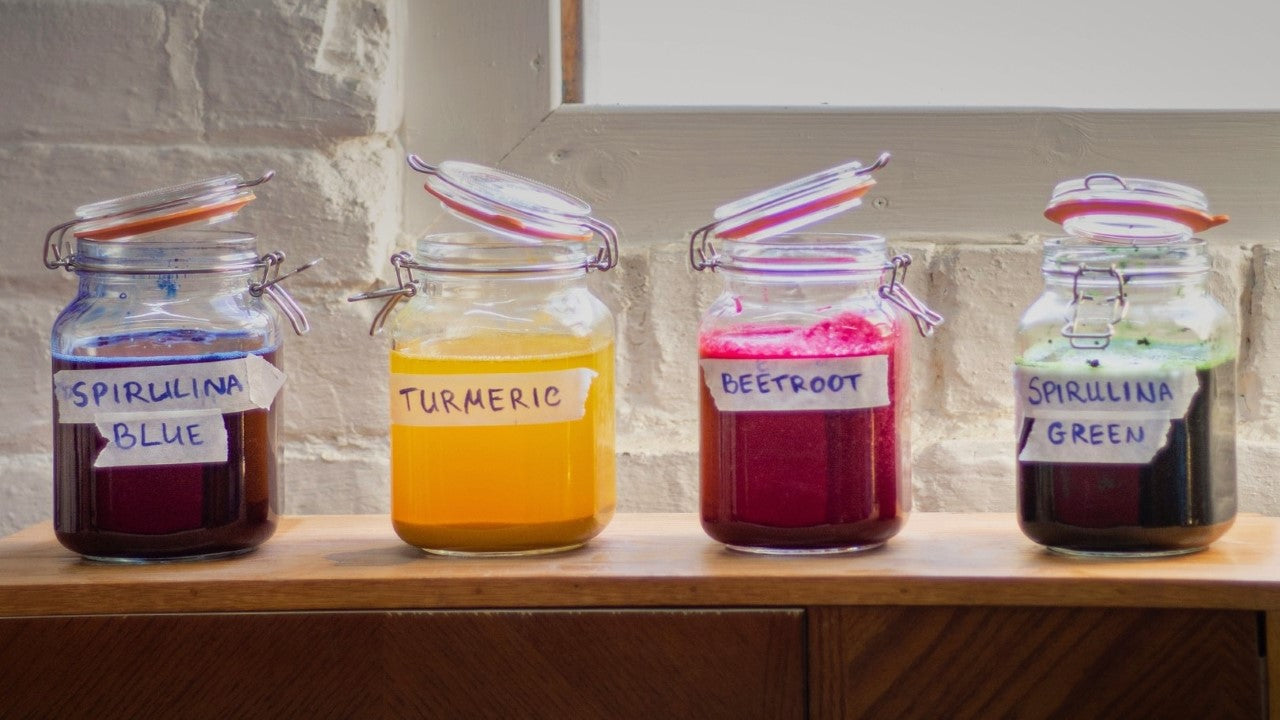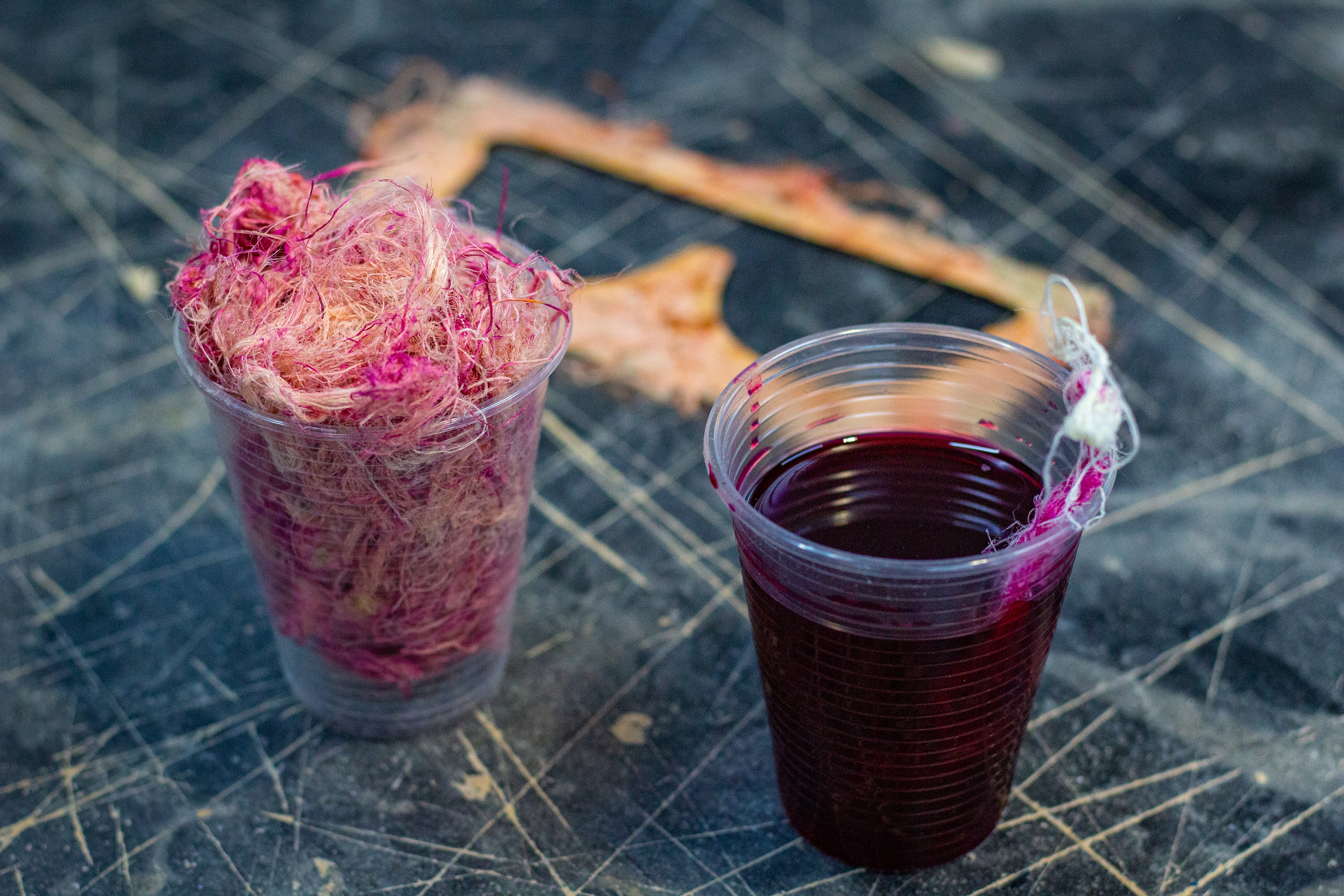
Meet the stars of our upcoming 'Superfood Series'.
In the previous blog post titled ‘The Dyeing Game: Synthetic, ‘Natural’ and Natural dye’, we looked at the ethics and reasoning behind growing industry support of the shift away from synthetic dyes and chemicals. The movement for sustainable and ethically sourced goods is ever present, as we continue to evolve and maintain our role as innovators in these areas.
The next big project for the team at Hemp Eyewear will be our coloured collections. Each collection will have its own unique theme centred on the bright pigments of; Beetroot, Phycocyanin, Chlorophyll and Turmeric. While more details are to come on each collection in the near future, here is an introduction to each of the four stunning natural dyes.

Colour: Blue
Scientific name: Phycocyanin
Name: (Blue) Spirulina
Introduction:
The most innovative and revolutionary of the coloured collections will be our blue frames.
Phycocyanin, or just PC, is a natural blue pigment, which is normally found in blue-green algae such as Spirulina. Inside the cell, PC helps to absorb light energy that cannot be normally absorbed by the major green pigments – chlorophylls.
Typically, when PC is harvested from Spirulina it is unstable and prone to discolouration outside of a relatively narrow range of temperature and acidity conditions. This is because Spirulina has evolved to grow optimally at 20-35 °C, so the pigments obtained from it are only stable up to ~50 °C.
The industrial applications of PC range from the food and cosmetics to pharmaceutical and textile industries and is particularly important as it is currently the only known natural, soluble blue colourant.
Developed and provided by Anton Puzorjov, a PhD student at the University of Edinburgh, the PC used in Hemp Eyewear is absolutely unique, and is not yet available in the market. By utilising the advances in synthetic biology and genetic engineering, the researchers have managed to produce a thermostable PC, which makes the process far more sustainable by significantly reducing the energy required to harvest the pigment.

Colour: Rose Pink
Scientific Name: Beta vulgaris
Name: Beetroot
Introduction:
Beetroot produces chemical compounds called betalains, which are natural pigments and antioxidants. The chemical structure of betalains can be modified to produce almost any hue. But whilst using beets to achieve a kaleidoscope of red, pink, purple and orange dying hues was once widely practiced, it has unfortunately lost its allure after the emergence of synthetic chemical dyes back in the 1850s.
Additionally, as a source of dye it certainly meets all our criteria. It’s sustainable, eco-friendly, ethically sourced and looks beautiful when combined with hemp. Questions may arise as to the longevity of the dye, this is based on the success of DIY projects many of us have tried at some point in our childhood, however this is not the case when combined with our pioneering technology processes. As far as natural colourants that meet our ethos, beetroot has earned its right in the limelight once more.

Colour: Green
Scientific Name: Arthrospira platensis derived chlorophyll
Name: Chlorophyll
Introduction:
Many of us are familiar with chlorophyll as being the green pigment within leaves and, along with light, is how plants grow. Specifically sourced from arthrospira platensis or Spirulina, chlorophyll is a fantastic source of a natural green dye and has been used throughout history in Indonesia. Additionally, much like the other dyes represented in our upcoming series, the benefits of such a chemical goes far beyond just that of natural dyes including antioxidant properties that qualify it as a superfood.
Green as a colour for our frames has so many relevant connotations with regards to sustainability and nature. Also hemp in all its many forms means a lot to individual people for a variety of reasons, and green is typically the colour that comes to mind when thinking of the super material. Over the years we have had many requests for a green coloured frame and as such we are ecstatic to be introducing the colour and believe it is a perfect fit within our whole concept.

Colour: Golden Yellow
Scientific name: Curcuma longa
Name: Turmeric
Introduction:
Last but certainly not least will be the expansion of our turmeric dyed hemp frames. We have seen great demand for our Primrose frame and as such we are currently looking at various styles which would be complemented by the stunning golden dye.
Moreover, tumeric has so many additional factors that provide evidence for it to be placed on such a pedestal; it has been found to have antibacterial properties when used in the textile industry, anti-inflammatory when used in the health and well being industry, to name a few. And in terms specific to our practice, it is exceptionally pigmented which means that it is very cost effective and requires less quantities of dye, making it even more environmentally friendly.



